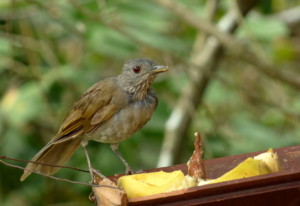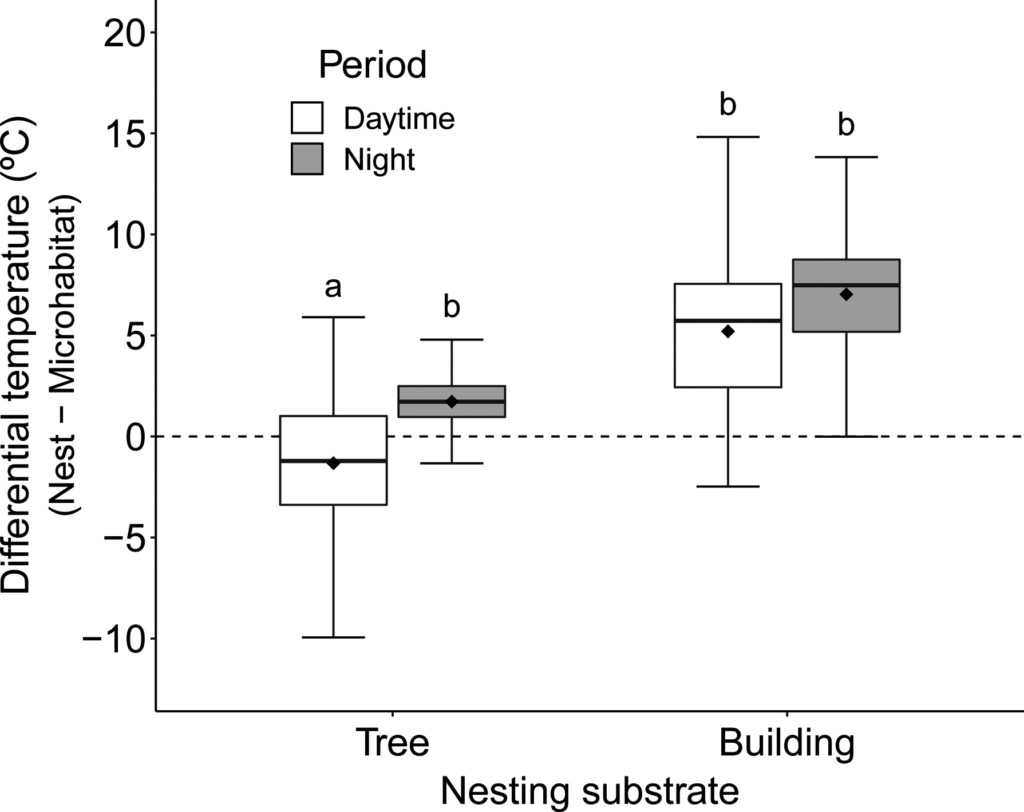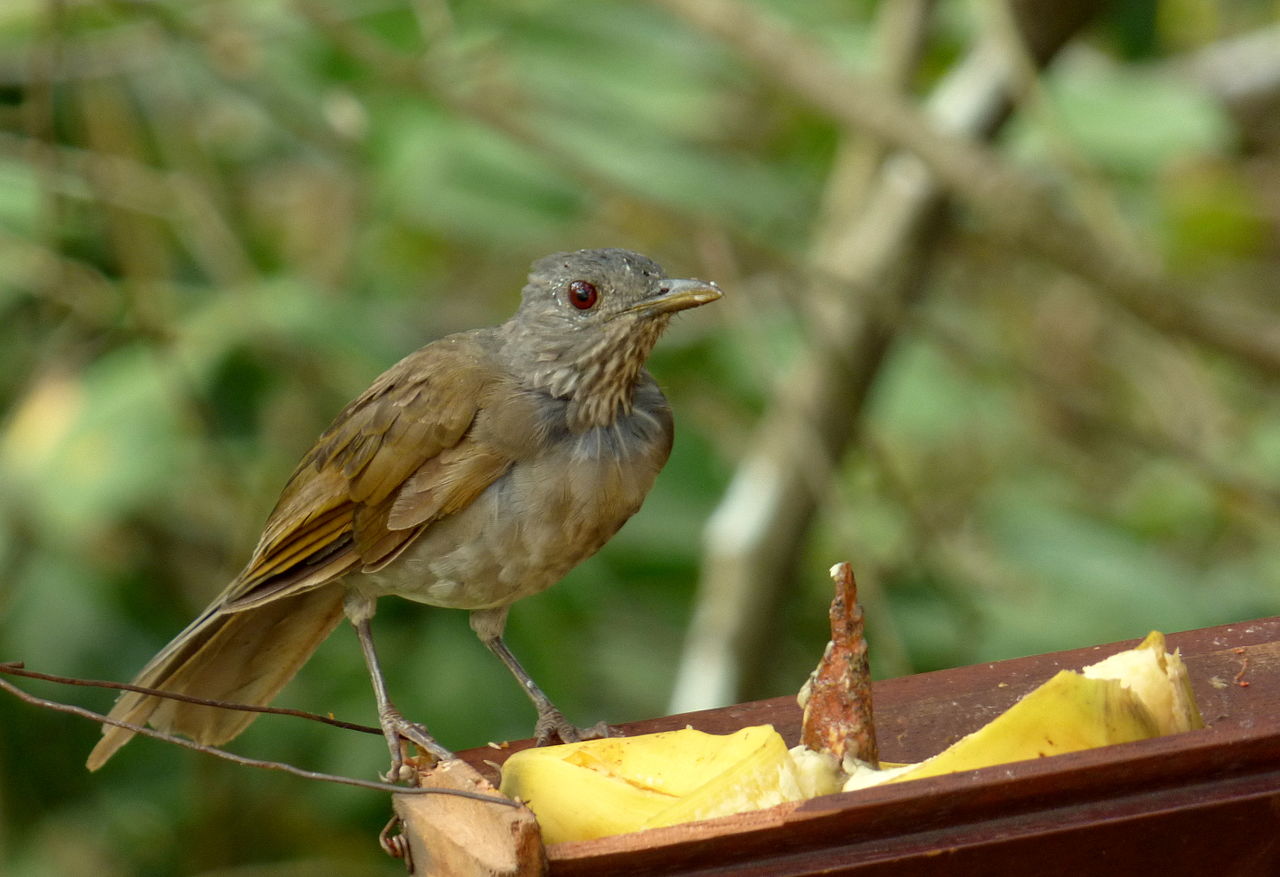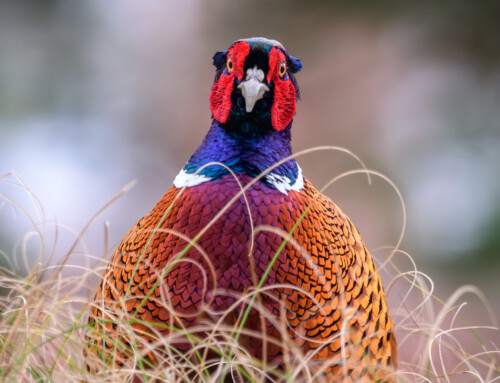 LINKED PAPER
LINKED PAPER
Buildings promote higher incubation temperatures and reduce nest attentiveness in a Neotropical thrush. Batisteli, A. F., De Souza, L. B., Santieff, I. Z., Gomes, G., Soares, T. P., Pini, M., Guillermo‐Ferreira, R., Pizo, M. A. & Sarmento, H. . 2021. IBIS. DOI: 10.1111/ibi.12863 VIEW
Not too cold, not too warm, but just right. Similar to the porridge in ‘Goldilocks and the Three Bears’, the temperature in a birds’ nest needs to be just right for the proper development of the embryos (Berntsen & Bech 2016). Female birds can adjust their incubation schedule to ensure that the nest temperature stays within a certain range. At the same time, the incubating female has to take care of her own health, leaving the nest for short foraging trips. The length of periods on and off the nest is partly influenced by the environmental temperature (Conway & Martin 2000). On cold days, females will spend more time on the nest, preventing the eggs from cooling down quickly. On warm days, the egg temperature will decrease more slowly, allowing the females to forage longer. Apart from females incubating the eggs, the nest temperature is influenced by many other factors, such as the location of the nest. What if birds build their nest in the city?
Foraging time
Augusto Batisteli and his colleagues investigated the consequences of urban nesting in the Pale-breasted Thrush (Turdus leucomelas). The researchers monitored the nest temperature and the behavior of the birds in two urban areas in São Paulo State, Brazil. Seventeen nests were located on buildings, while nineteen were built in trees. Statistical analyses revealed that the nest temperature was significantly higher in buildings compared to trees. This temperature differences allowed the city birds to spend less time on the nest and invest more time in foraging. Specifically, females that nest in buildings spent 7.5% less time incubating, which corresponds to about one hour per day. The extra energy acquired during these longer foraging trips may improve the fitness of the parents, leading to more successful breeding attempts (Reid et al. 2000).

Figure 1. Differential temperature (i.e. the difference between the temperature inside the nest incubation chamber and the ambient temperature) in relation to nesting substrate type (tree vs. building) and the period of day in nests of Pale‐breasted Thrush (Turdus leucomelas).
Predation risk
In addition to the temperature advantage, city birds might also experience less predation risk (Fontaine & Martin 2006). The large buildings surrounding the nest could provide more cover from predators. Moreover, the main predators in the study area (corvids) tend to avoid buildings (Møller 2010). The lower predation risk might allow the thrushes to leave their nests unattended for longer periods. These findings indicate that some bird species can quickly adapt to human-made environments and take advantage of unexpected benefits. Given the time and opportunity, birds will find their ‘goldilocks zone’ in the city.
References
Berntsen, H.H. & Bech, C. (2016). Incubation temperature influences survival in a small passerine bird. Journal of Avian Biololgy 47: 141– 145. VIEW
Conway, C.J. & Martin, T.E. (2000). Evolution of passerine incubation behavior: influence of food, temperature, and nest predation. Evolution 54: 670– 685. VIEW
Fontaine, J.J. & Martin, T.E. (2006). Parent birds assess nest predation risk and adjust their reproductive strategies. Ecology Letters 9: 428– 434. VIEW
Møller, A.P. (2010). The fitness benefit of association with humans: elevated success of birds breeding indoors. Behavioral Ecology 21: 913– 918. VIEW
Reid, J.M., Monaghan, P. & Ruxton, G.D. (2000). Resource allocation between reproductive phases: the importance of thermal conditions in determining the cost of incubation. Proceedings of the Royal Society B 267: 37– 41. VIEW
Image credits
Top right: Pale-breasted Thrush (Turdus leucomelas) | Alejandro Bayer Tamayo | CC BY-SA 2.0 Wikimedia Commons
Blog posts express the views of the individual author(s) and not those of the BOU.
If you want to write about your research in #theBOUblog, then please see here





